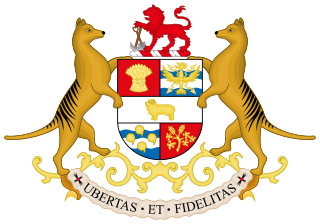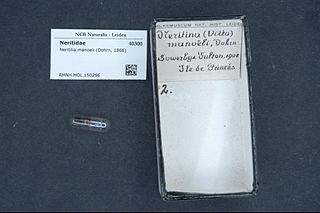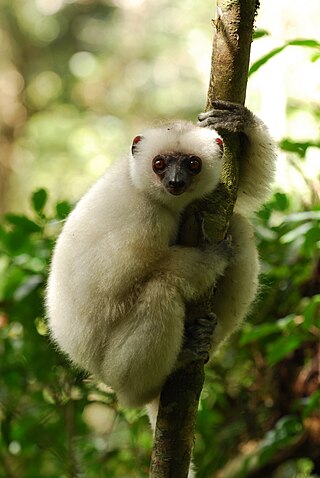
The Gunnison grouse, Gunnison sage-grouse or lesser sage-grouse is a species of grouse endemic to the United States. It is similar to the closely related greater sage-grouse in appearance, but about a third smaller in size, with much thicker plumes behind the head; it also has a less elaborate courtship dance. It is restricted in range to southwestern Colorado and extreme southeastern Utah, with the largest population residing in the Gunnison Basin region in Colorado. Despite being native to a country where the avifauna is relatively well known, it was overlooked until the 1990s due to the similarities with the sage grouse, and only described as a new species in 2000—making it the first new avian species to be described from the USA since the 19th century. The description of C. minimus as a separate species is supported by a molecular study of genetic variation, showing that gene flow between the large-bodied and the small-bodied birds is absent.

Threatened species are any species which are vulnerable to extinction in the near future. Species that are threatened are sometimes characterised by the population dynamics measure of critical depensation, a mathematical measure of biomass related to population growth rate. This quantitative metric is one method of evaluating the degree of endangerment.

A near-threatened species is a species which has been categorized as "Near Threatened" (NT) by the International Union for Conservation of Nature (IUCN) as that may be vulnerable to endangerment in the near future, but it does not currently qualify for the threatened status.

An IUCN Red List Critically Endangered species is one that has been categorized by the International Union for Conservation of Nature as facing an extremely high risk of extinction in the wild. As of 2021, of the 120,372 species currently tracked by the IUCN, there are 8,404 species that are considered to be Critically Endangered.

The Threatened Species Protection Act 1995, is an act of the Parliament of Tasmania that provides the statute relating to conservation of flora and fauna. Its long title is An Act to provide for the protection and management of threatened native flora and fauna and to enable and promote the conservation of native flora and fauna. It received the royal assent on 14 November 1995.

The grey long-eared bat is a fairly large European bat. It has distinctive ears, long and with a distinctive fold. It hunts above woodland, often by day, and mostly for moths. In captivity, it has also been recorded to eat small lizards. It is extremely similar to the more common brown long-eared bat, and was only distinguished in the 1960s, but has a paler belly.

A species that is extinct in the wild (EW) is one that has been categorized by the International Union for Conservation of Nature as known only by living members kept in captivity or as a naturalized population outside its historic range due to massive habitat loss.

The Canary long-eared bat, also known as the Canary big-eared bat or Tenerife long-eared bat, is a species of vesper bat endemic to the Canary Islands. According to the IUCN, it is vulnerable to the risk of extinction. The species is primarily found in woodland habitat at elevations between 100 and 2300 m. It feeds mainly on moths. Roosting sites include caves, lava tubes and abandoned buildings.

Villa's gray shrew is a shrew native to northeastern Mexico, where it is called musaraña.

Kelaart's long-clawed shrew is a species of mammal in the family Soricidae. It is the only species within the genus Feroculus. It is endemic to Sri Lanka and southern India. Its natural habitats are subtropical or tropical dry forests and grassland, and swamps. It is threatened by habitat loss. The species is named for zoologist Edward Frederick Kelaart.

Day's shrew is a species of mammal in the family Soricidae. It is endemic to India. Its natural habitat is subtropical or tropical dry forests. It is threatened by habitat loss.

The Temotu flying fox is a species of flying fox in the family Pteropodidae. It is endemic to the Solomon Islands. It is threatened by habitat destruction due to subsistence agricultural practices, as well as natural disasters such as tropical cyclones. Due to its imperiled status, it is identified by the Alliance for Zero Extinction as a species in danger of imminent extinction. In 2013, Bat Conservation International listed this species as one of the 35 species of its worldwide priority list of conservation.

The ornate flying fox is a species of flying fox in the family Pteropodidae. It is endemic to New Caledonia. Its natural habitat is subtropical or tropical dry forests. It is threatened due to habitat destruction and hunting, the former exacerbated by high roost-site fidelity.

Neritilia manoeli is a species of minute freshwater snail with an operculum, an aquatic gastropod mollusc or micromollusk in the family Neritiliidae.
Molendoa is a genus of moss in family Pottiaceae.
Bat Conservation International (BCI) is an international nongovernmental organization working to conserve bats and their habitats through conservation, education, and research efforts.

The World's 25 Most Endangered Primates is a list of highly endangered primate species selected and published by the International Union for Conservation of Nature (IUCN) Species Survival Commission (SSC) Primate Specialist Group (PSG), the International Primatological Society (IPS), Global Wildlife Conservation (GWC), and Bristol Zoological Society (BZS). The IUCN/SSC PSG worked with Conservation International (CI) to start the list in 2000, but in 2002, during the 19th Congress of the International Primatological Society, primatologists reviewed and debated the list, resulting in the 2002–2004 revision and the endorsement of the IPS. The publication was a joint project between the three conservation organizations until the 2012–2014 list when BZS was added as a publisher. The 2018–2020 list was the first time Conservation International was not among the publishers, replaced instead by GWC. The list has been revised every two years following the biannual Congress of the IPS. Starting with the 2004–2006 report, the title changed to "Primates in Peril: The World's 25 Most Endangered Primates". That same year, the list began to provide information about each species, including their conservation status and the threats they face in the wild. The species text is written in collaboration with experts from the field, with 60 people contributing to the 2006–2008 report and 85 people contributing to the 2008–2010 report. The 2004–2006 and 2006–2008 reports were published in the IUCN/SSC PSG journal Primate Conservation,, since then they have been published as independent publications.












